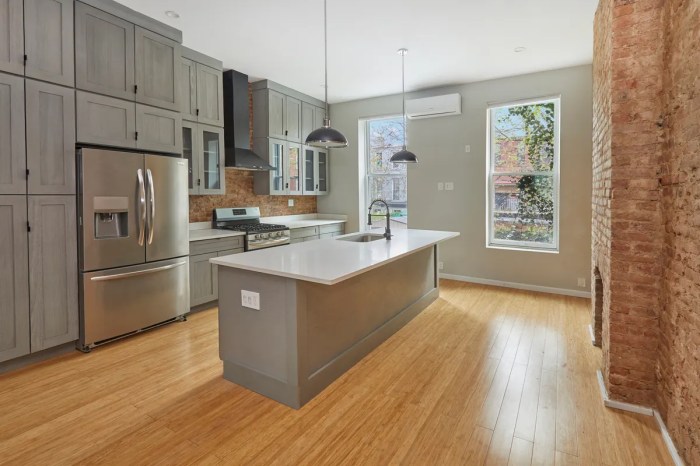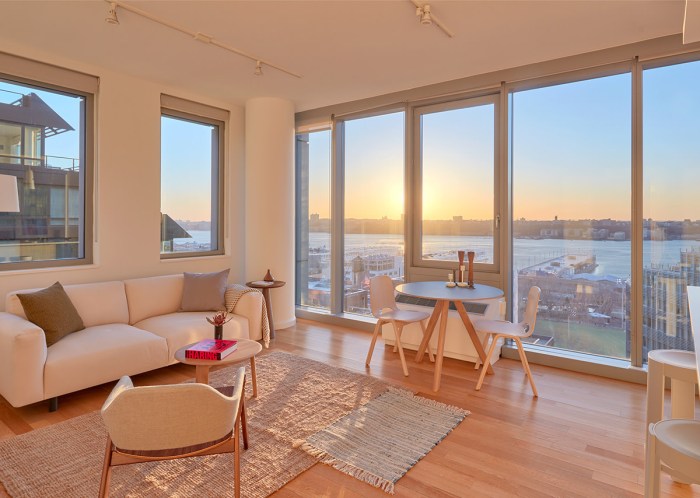House for Rent NYC A Comprehensive Guide
NYC House Rental Market: A Comprehensive Guide
The New York City rental market, particularly for houses, presents a unique blend of opportunity and challenge. Understanding the nuances of this dynamic market is crucial for both prospective renters and landlords. This guide provides an overview of key aspects, including market trends, desirable features, neighborhood analyses, and legal considerations.
NYC Rental Market Overview

Source: zillowstatic.com
The NYC house rental market is highly competitive, characterized by high demand and limited supply. Prices vary significantly depending on location, size, and amenities. Manhattan generally commands the highest rental rates, followed by Brooklyn and Queens. The market fluctuates seasonally, with increased demand during peak moving seasons (spring and summer).
Typical rental price ranges vary widely. In Manhattan, expect to pay significantly more than in the outer boroughs. A modest house in a less desirable area of Brooklyn or Queens might start around $4,000 per month, while a comparable house in a prime Manhattan location could easily exceed $10,000 or more. Luxury houses in all boroughs command significantly higher prices, often reaching tens of thousands of dollars per month.
Manhattan’s rental market is known for its luxury properties and competitive bidding. Brooklyn and Queens offer more diverse options, ranging from renovated brownstones to modern townhouses, generally at lower price points than Manhattan. However, even in these boroughs, competition remains strong in desirable neighborhoods.
Common rental terms and conditions typically include a one-year lease, security deposit (usually one or two months’ rent), broker’s fee (often one month’s rent), and a detailed lease agreement outlining tenant responsibilities and landlord obligations. Understanding these terms is essential before signing any lease.
House Features and Amenities

Source: tripadvisor.com
The features and amenities of a house significantly influence its rental price. Desirable features such as central air conditioning, in-unit laundry, and private outdoor space command premium rents. Pet-friendliness is also a highly sought-after amenity, though it might come with additional fees.
| Feature | Impact on Rental Price | Example | Borough Example |
|---|---|---|---|
| Number of Bedrooms | Higher number of bedrooms generally increases rent | 3-bedroom house vs. 1-bedroom apartment | Brooklyn: 3-bedroom brownstone commands higher rent than a 1-bedroom apartment |
| Number of Bathrooms | More bathrooms typically increase rent | 2-bathroom house vs. 1-bathroom house | Manhattan: 2-bathroom townhouse costs more than a similar 1-bathroom unit |
| Parking | On-site parking significantly increases rent, especially in Manhattan | Garage parking vs. street parking | Manhattan: Parking space is a significant premium. |
| Yard/Outdoor Space | Private yard or patio increases rental value | Private garden vs. no outdoor space | Queens: Houses with yards are more expensive than comparable houses without. |
A hypothetical house listing in a trendy neighborhood like Williamsburg, Brooklyn, might include features such as:
- 3 bedrooms
- 2 bathrooms
- Private backyard
- In-unit laundry
- Central air conditioning
- Modern kitchen
Unique features attracting renters in different neighborhoods might include a rooftop deck in Manhattan, a finished basement in Brooklyn, or a large yard in Queens.
Neighborhood Analysis
Three diverse NYC neighborhoods offer contrasting rental experiences: Greenwich Village (Manhattan), Park Slope (Brooklyn), and Forest Hills (Queens).
| Neighborhood | Advantages | Disadvantages | Typical Renter Profile |
|---|---|---|---|
| Greenwich Village (Manhattan) | Historic charm, vibrant culture, proximity to amenities | High cost of living, limited space, competitive rental market | High-income professionals, young couples |
| Park Slope (Brooklyn) | Family-friendly, tree-lined streets, excellent schools | High cost of living, competitive rental market | Families, young professionals |
| Forest Hills (Queens) | More affordable than Manhattan and Brooklyn, large houses, good transportation | Less vibrant nightlife compared to Manhattan and Brooklyn | Families, professionals seeking more space at a lower cost |
Rental Process and Legal Considerations
Renting a house in NYC typically involves finding a suitable property, submitting an application, undergoing a credit and background check, negotiating lease terms, signing the lease, and paying the security deposit and first month’s rent.
Common documents required from renters include proof of income, credit report, and references. Landlords usually require proof of insurance. Lease agreements typically include clauses regarding rent payment, lease duration, maintenance responsibilities, and eviction procedures.
Legal considerations for landlords include complying with fair housing laws, maintaining habitable conditions, and providing proper notice for rent increases or evictions. Tenants should be aware of their rights regarding habitability, rent control (where applicable), and lease termination.
Visual Representation of Rental Data

Source: amazonaws.com
A bar chart could visually represent the average rental prices for houses across different NYC boroughs. The x-axis would represent the boroughs (Manhattan, Brooklyn, Queens, Bronx, Staten Island), and the y-axis would represent the average monthly rent. Data sources would include real estate websites and market reports. Error bars could be included to show the variability in rental prices.
Finding a house for rent in NYC can be challenging, especially with the competitive market. If you’re open to exploring options outside the city’s core, consider checking out town houses for rent near me for potentially more affordable and spacious options. Returning to the NYC market, remember to factor in commute times when considering suburban alternatives.
An infographic could summarize key factors influencing house rental prices. It could use icons and concise text to highlight factors such as location, size, amenities, and market demand. The data sources would be similar to those used for the bar chart. The infographic could use a color-coded system to represent the relative importance of each factor.
Questions and Answers
What is the average security deposit in NYC for a house rental?
Security deposits typically range from one to two months’ rent, but this can vary depending on the landlord and property.
How long is a typical lease term in NYC for a house?
Lease terms commonly range from one to two years, although shorter-term leases may be available, often at a higher monthly cost.
What are broker fees in NYC?
Broker fees are usually one month’s rent, but can be negotiable in some cases. Always clarify the fee structure upfront.
Are there any rent control laws in NYC affecting houses?
Rent control primarily applies to apartments, not houses, though some older buildings may have rent-stabilized units.
What documents are typically needed to apply for a house rental in NYC?
Landlords typically require proof of income, credit reports, references, and employment verification.




















